Okayama: The Land of Canals, Gardens and Momotaro the Peach Boy
The home of stunning canals, one of the country's top three landscape gardens, and the origin of Japan's most well-known folktale, it's genuinely surprising that Okayama Prefecture is not more visited among tourists.
While I would love to keep this little slice of Japan all to myself, today I'm here to share with you how to make the most of Okayama in a three-day trip. I spent a day by the canals of Kurashiki, a day cycling through Kibiji District, and a day exploring Korakuen garden followed by a wander around Uno Port, which links straight to Japan's art islands.
Basing myself by Okayama Station in central Okayama City, every spot I visited is easily accessible by public transport. So at the end of this article I'll share some information about transport and the different passes you can use to make a longer trip to nearby prefectures more worthwhile.
Day One: Kurashiki
After arriving in Okayama City and dropping my bag at the hotel, I went straight back to the station to begin my adventure in Kurashiki, another city just a 20-minute local train ride away.
Kurashiki is a beautiful area known for its historic district with a picturesque canal lined by shops and cafes.
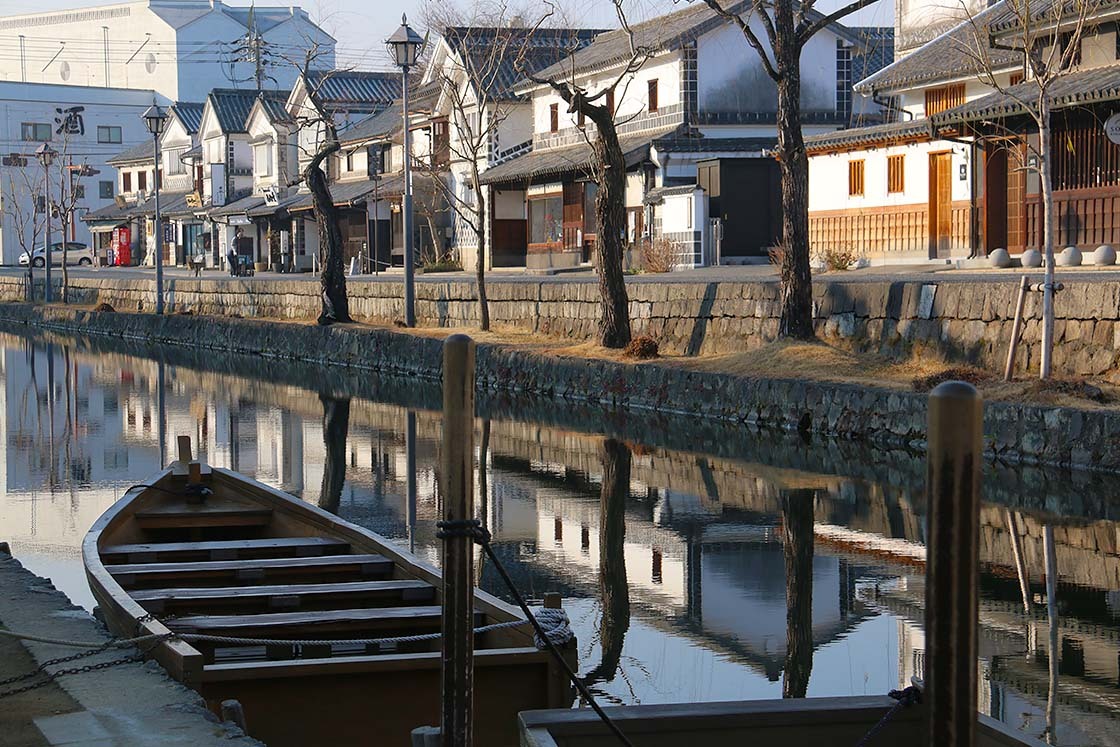
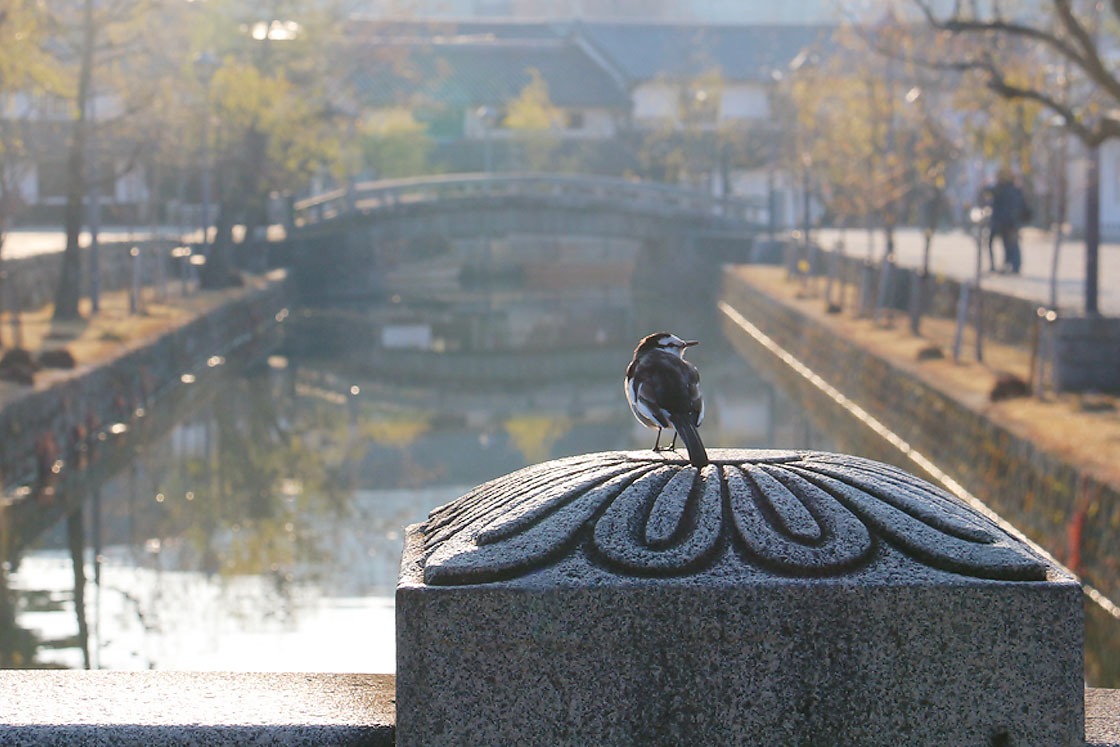
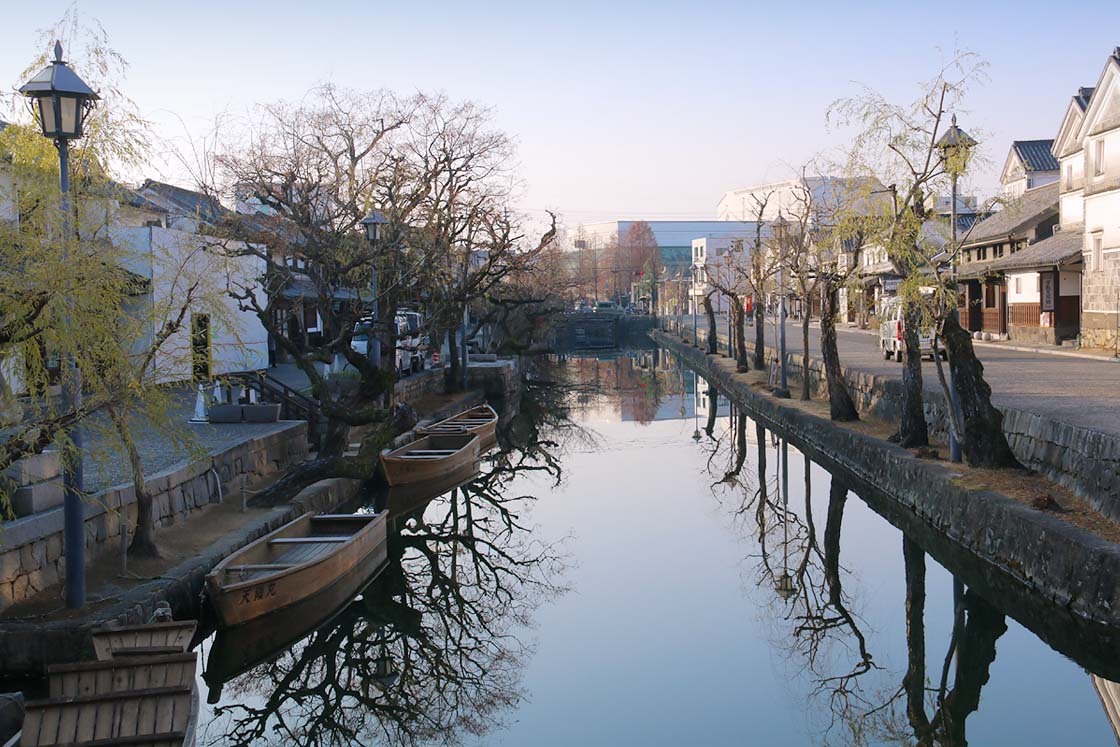
Many of the establishments surrounding the canal are housed in traditional storehouses, called kura, which is where Kurashiki gets its name, loosely meaning "town of storehouses." These were once used to store rice and other goods.
The streets around the canals are full of these traditional buildings, creating a truly picturesque setting that I believe is a real contender for some of Japan's top sightseeing towns.
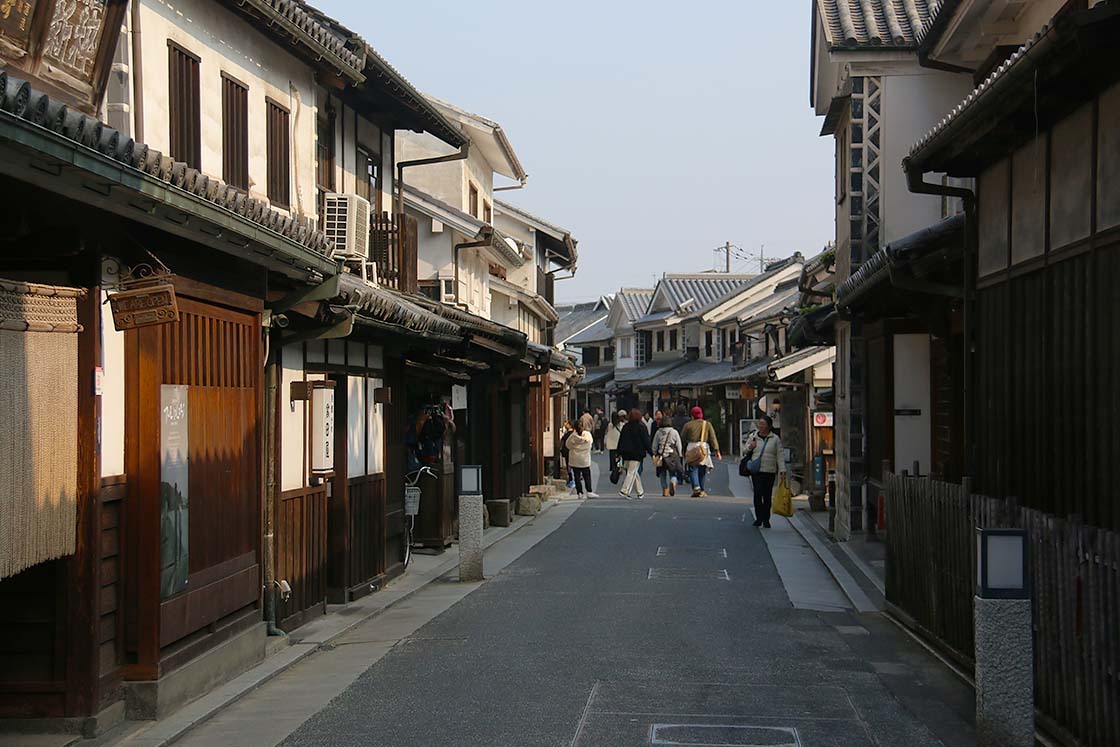
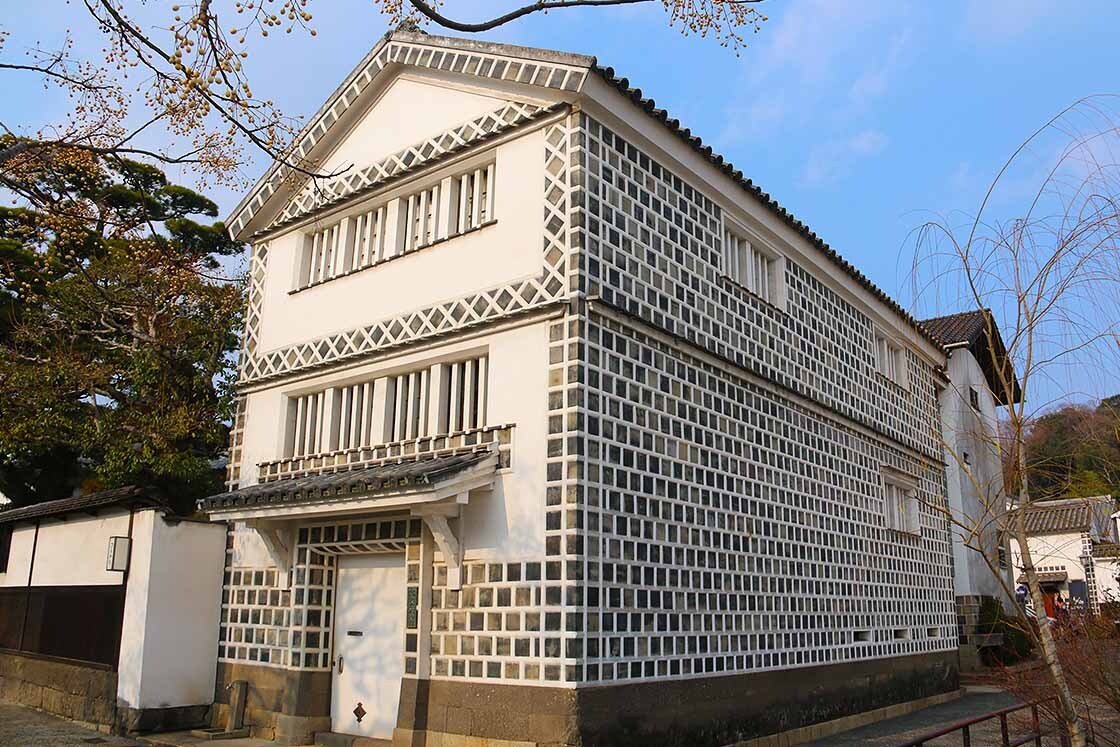
My first visit inside one of those traditional buildings was to Cafe Miyake Shouten, set in a storehouse that has been around for over 100 years.
I slid open the door to find a warm and welcoming atmosphere, with a large tatami area as well as two western-style tables. As it was a weekday, I ordered their weekday curry set, which comes with dessert and a drink to follow their comforting Japanese curry. The curry was a little sweet and a little spicy, with plenty of vegetables to fill me up. The pudding was creamy and delicious, the cake was soft, and the tea was a welcome warm drink on a cold day. I enjoyed it all while being surrounded by the historic earthen walls, thinking of what might have been stored here a century ago.
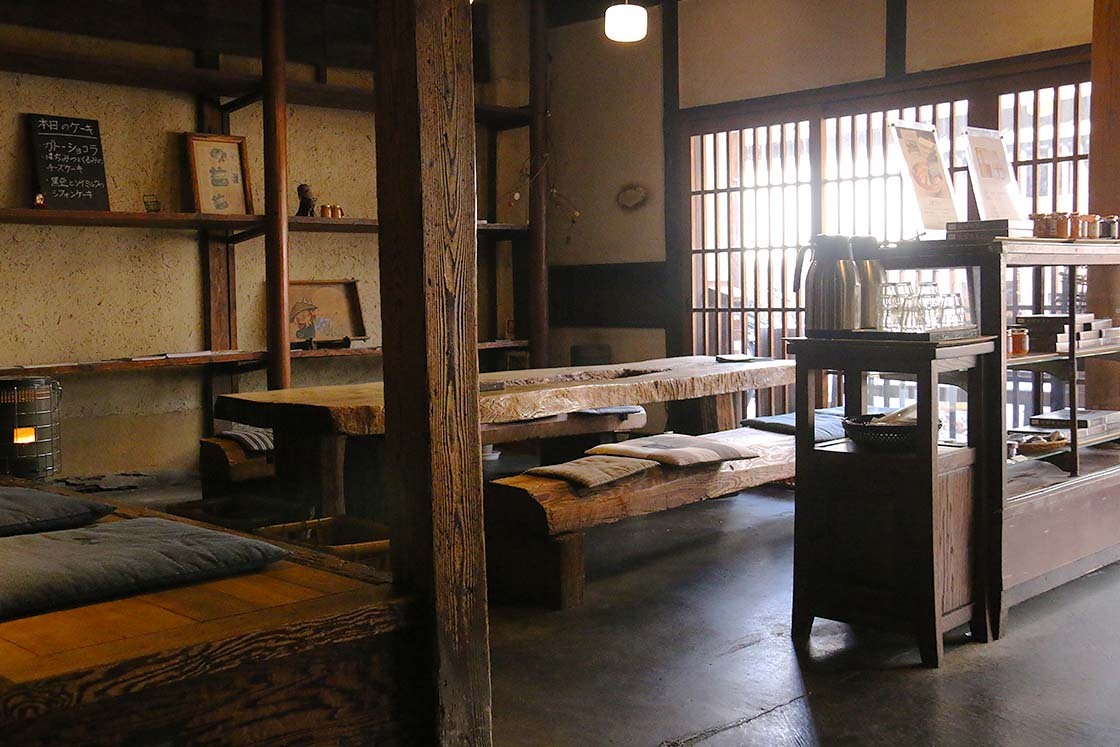
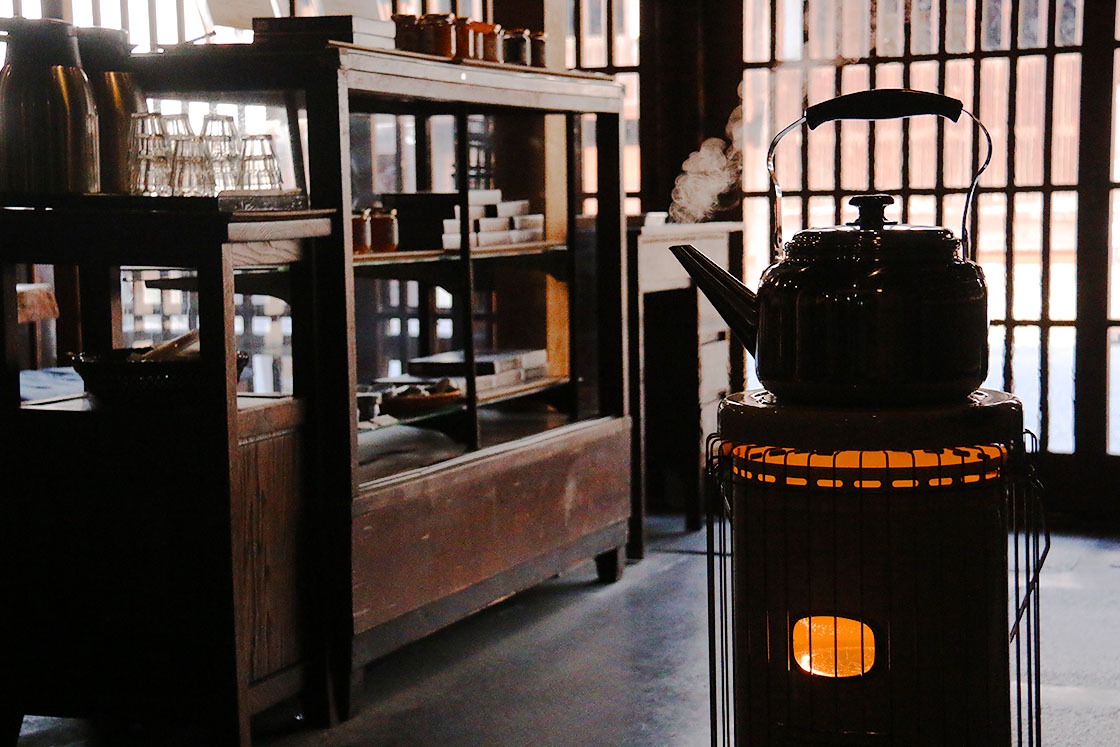

However, while a major use for the storehouses was rice, Kurashiki is not well-suited to growing the grain, as the town was built on reclaimed land from the ocean, making it too salty. The rice came from surrounding areas, and was stored to be collected for tax purposes.
Instead of rice, they planted cotton. More impervious to salt, Kurashiki's cotton industry thrived, later giving way to a booming denim industry.
Playing a part in the cotton boom was the Kurabo mill, one of Japan's early cotton mills. The mill was opened in 1889, taking inspiration from British mills at the time. It has now been converted into a cultural complex featuring a hotel, shops and other facilities called Kurashiki Ivy Square, while still maintaining much of its former brick-and-mortar charm.
While you can stay at their hotel, it's also a nice place to explore some of its historic features, and there is even a museum if you want to learn more about their place in Kurashiki's cotton history.
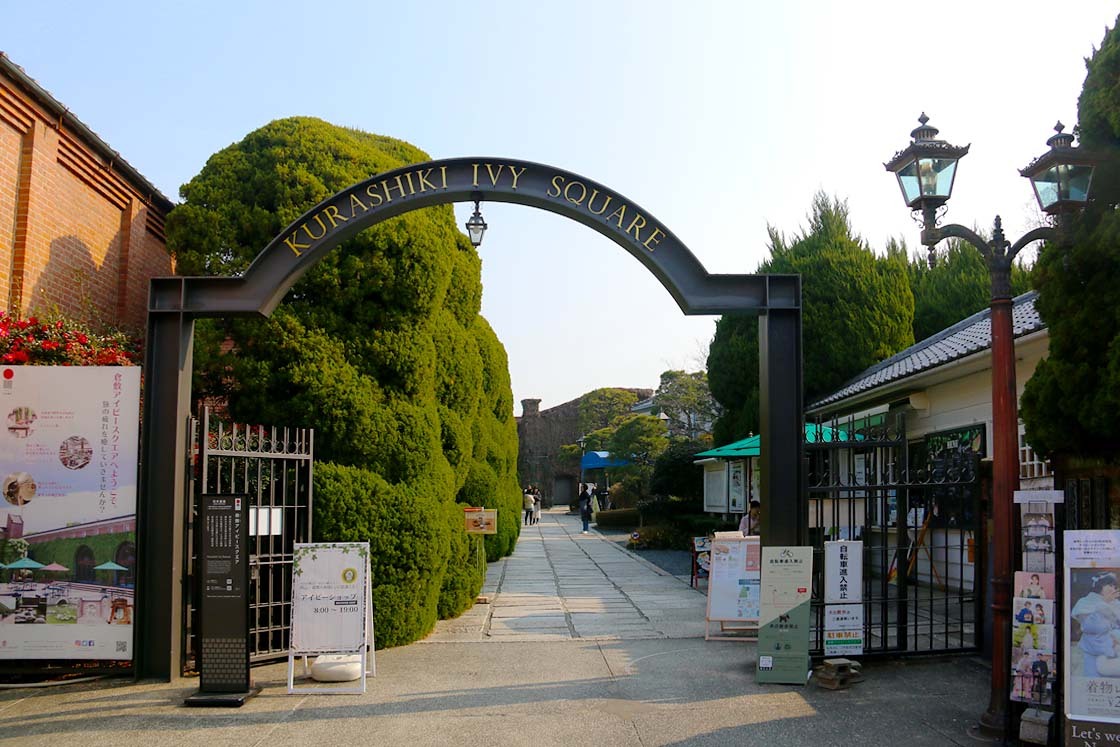
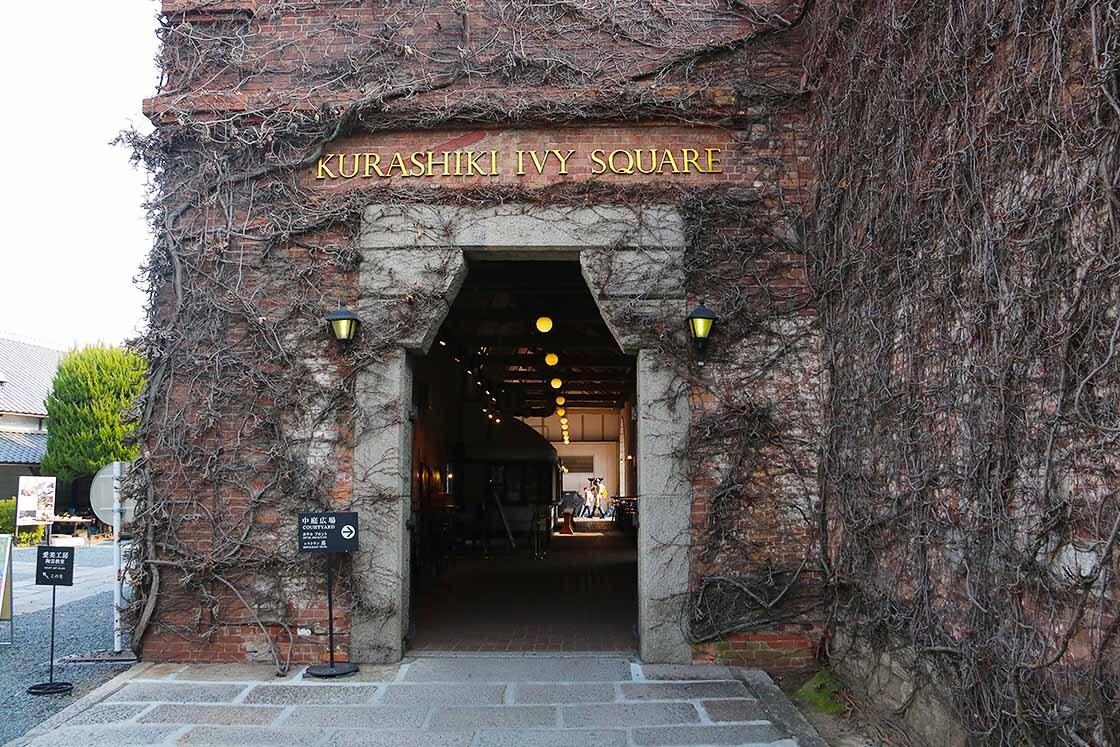
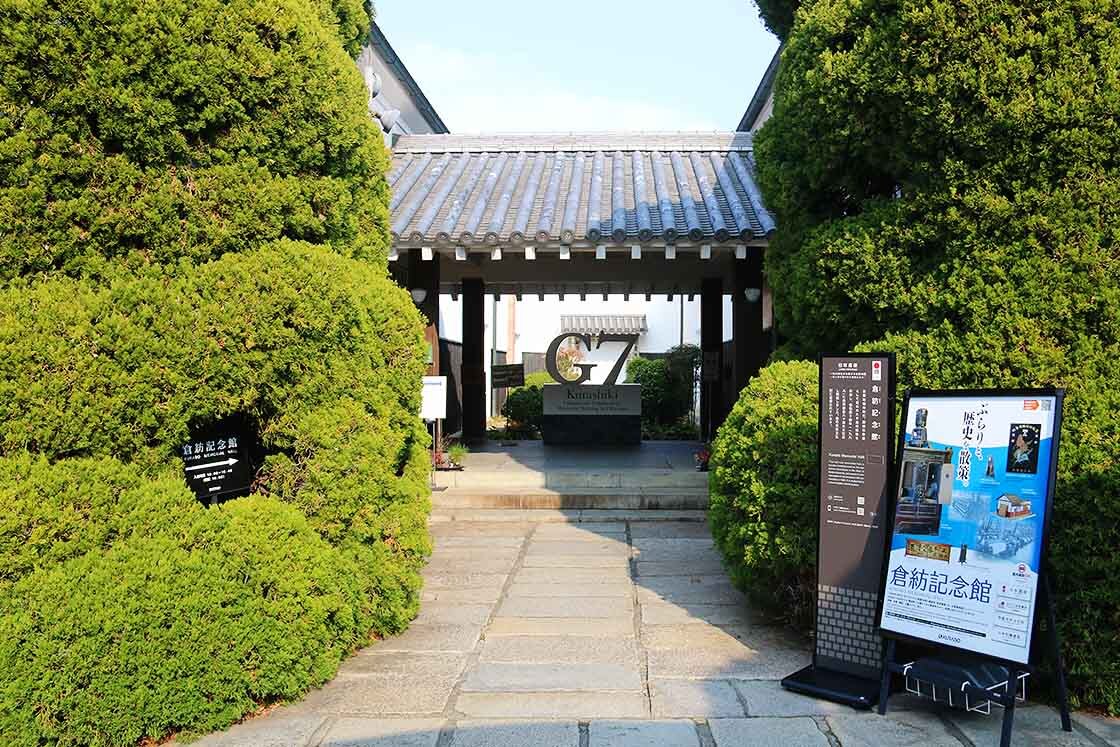
As for the denim industry that followed, you can now find a number of different denim shops around the town, but the largest by the canal is Denim Street.
Denim Street may sound like a street of different denim shops, but it is in fact one shop with mutliple sections and entrances, lined up along a small street. The section closest to the street sells accessories and other small items, followed by a Ladies' section and a Men's section at the end. There is even a small food stand selling denim-themed items like blue hot dogs and drinks.
Alongside their own Denim Street items, the shop also stocks other local brands, like Momotaro Jeans, a brand inspired by the famous folktale of Momotaro, a boy born from a peach.

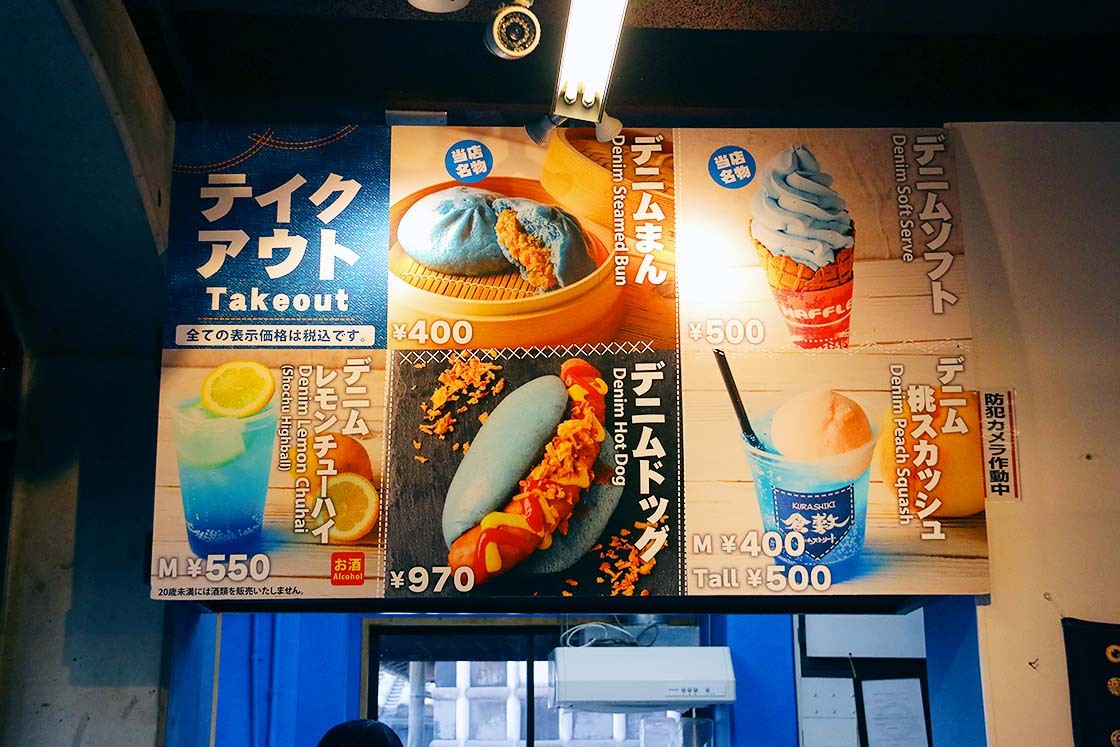
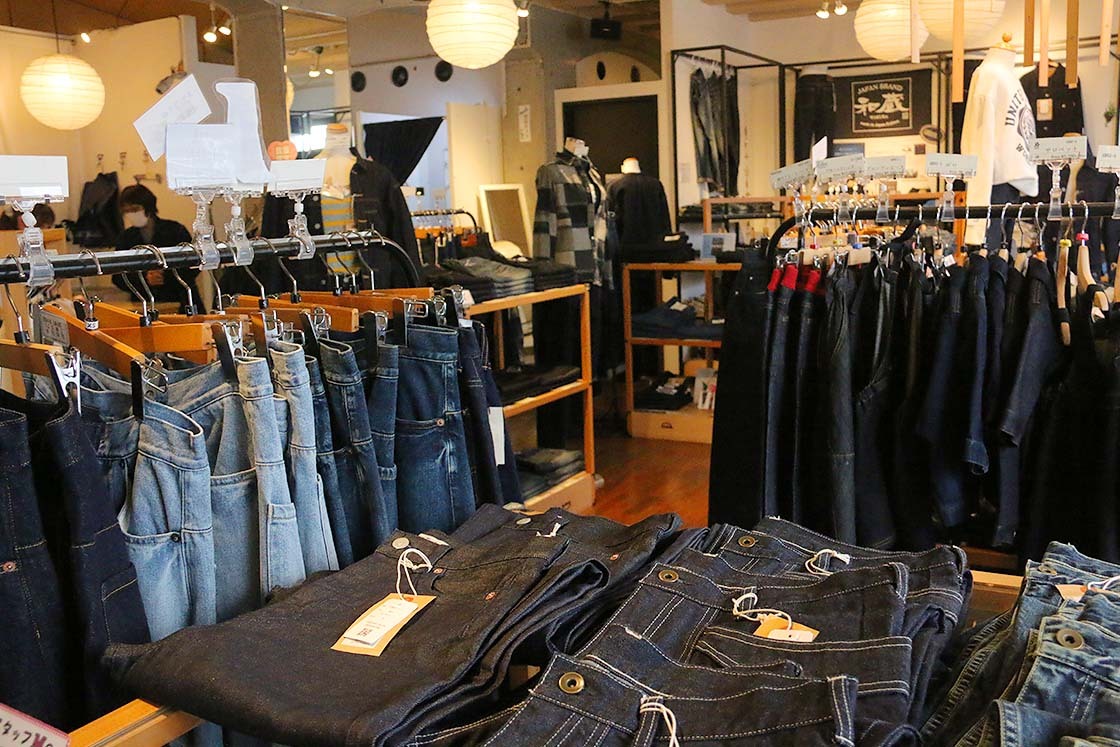
My last stop in Kurashiki was to the Ohara Museum of Art. The second-generation owner of the Kurabo mill, Magosaburo Ohara, began a number of educational initiatives for the mill and local area, including a scholarship. He then set up the Ohara Museum of Art to commemorate one of the scholarship students, Kojima Torajiro. Together they had collected various artworks from Europe, including El Greco's Annunciation, which Ohara put on display alongside Torajiro's artworks after his passing. The museum has now expanded to include all sorts of contemporary Japanese and Western pieces. Please note that photography is not usually permitted inside the museum.

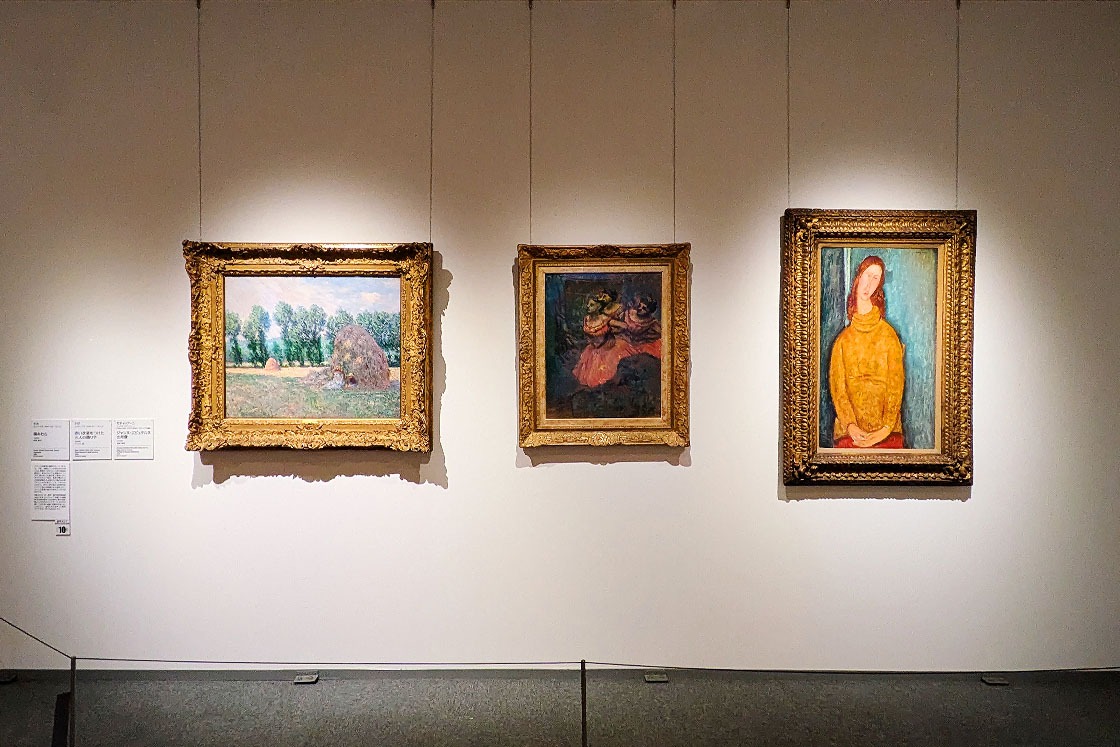
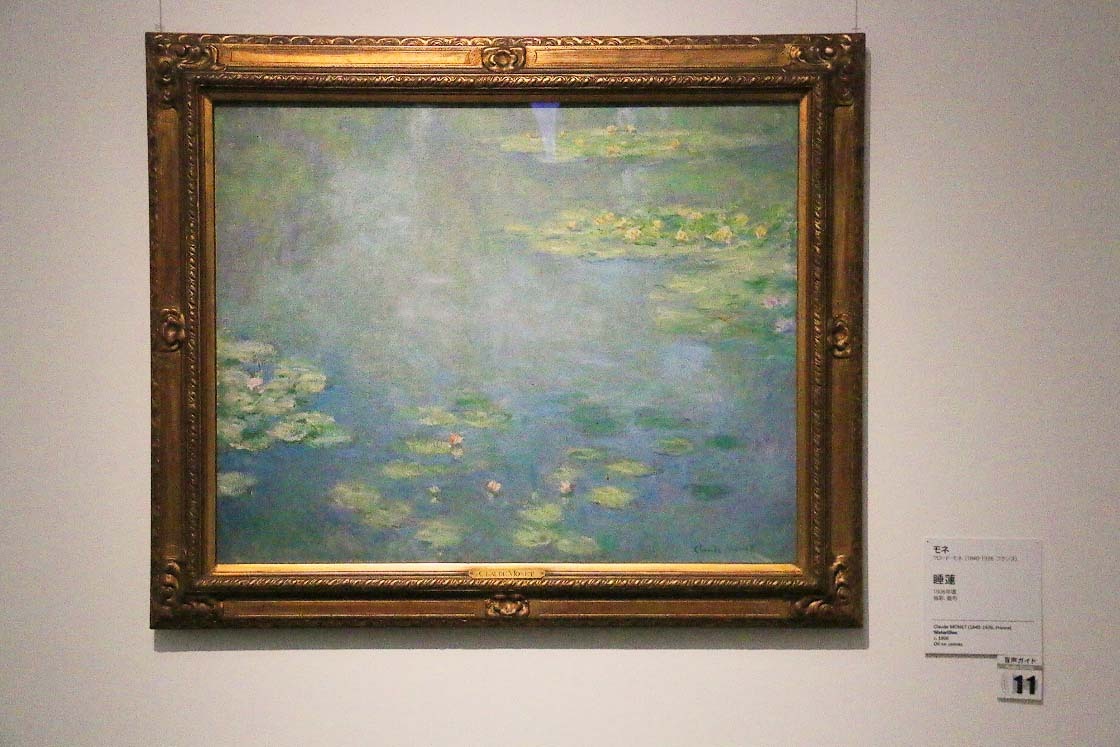
Day Two: Cycling on the Kibiji District
Kibiji District is a flatland that was once the home of the Kibi Kingdom and its clan that controlled much of the area that we now call Okayama.
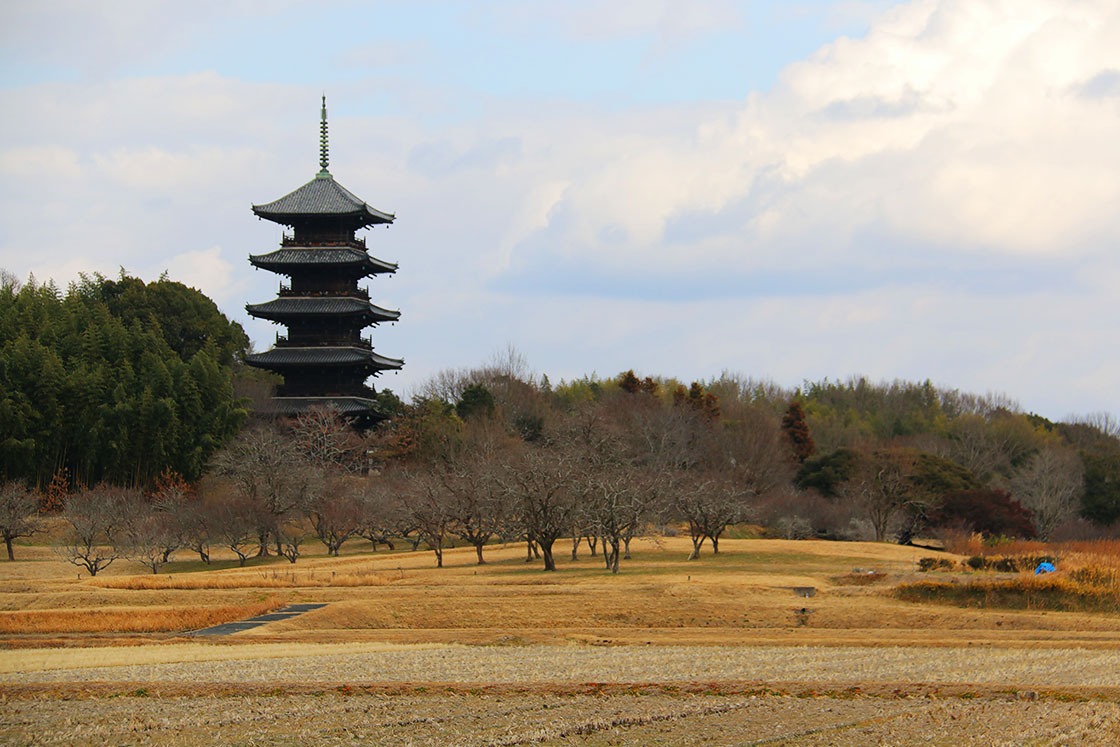
The area is mainly known for a very famous folktale called Momotaro, which was based on the Legend of Prince Kibitsuhiko.
The legend goes that Prince Kibitsuhiko was sent to help Aso Village, which was under threat by the demon, Ura. The two fought throughout the region, first by bow-and-arrow, then, by transforming into different animals. The prince finally caught Ura when he was in the form of a carp, and placed his head under a stove to silence him, bringing peace to the village. The legend and the story of Momotaro have many similarities, but the main difference is that in Momotaro, the hero was born from a peach.
These days, you can rent a bike at Bizen-Ichinomiya Station to explore some of the shrines relating to the legend as well as other historical spots in the area. So I picked up my electric bike at Uedo Rent-a-cycle to start my day at Kibitsuhiko Shrine.
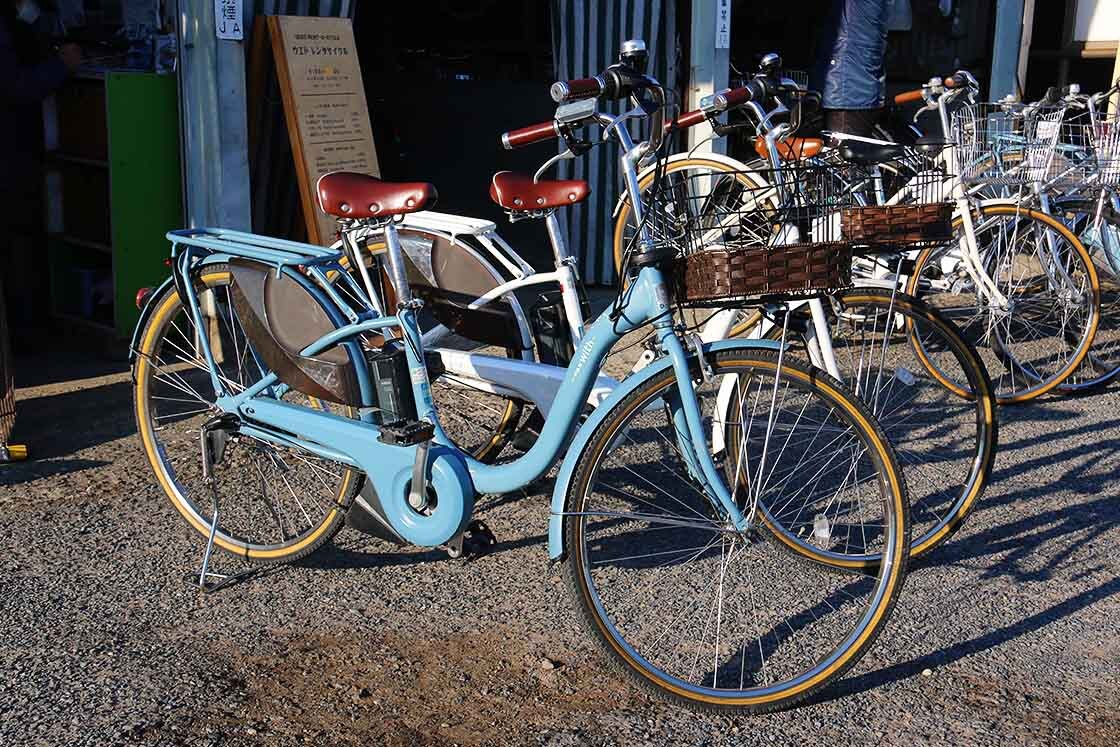
The shrine stands on the spot where Prince Kibitsuhiko is said to have stopped to pray before launching his attack. It was built in 1697 and is dedicated to the prince. You'll spot it on the way to the cycle route from the station, as there is a big torii gate with a path across the pond to the main hall. My favorite part was the line of red torii gates on the south side of the shrine that led to a peaceful Inari Shrine nestled in the surrounding trees.
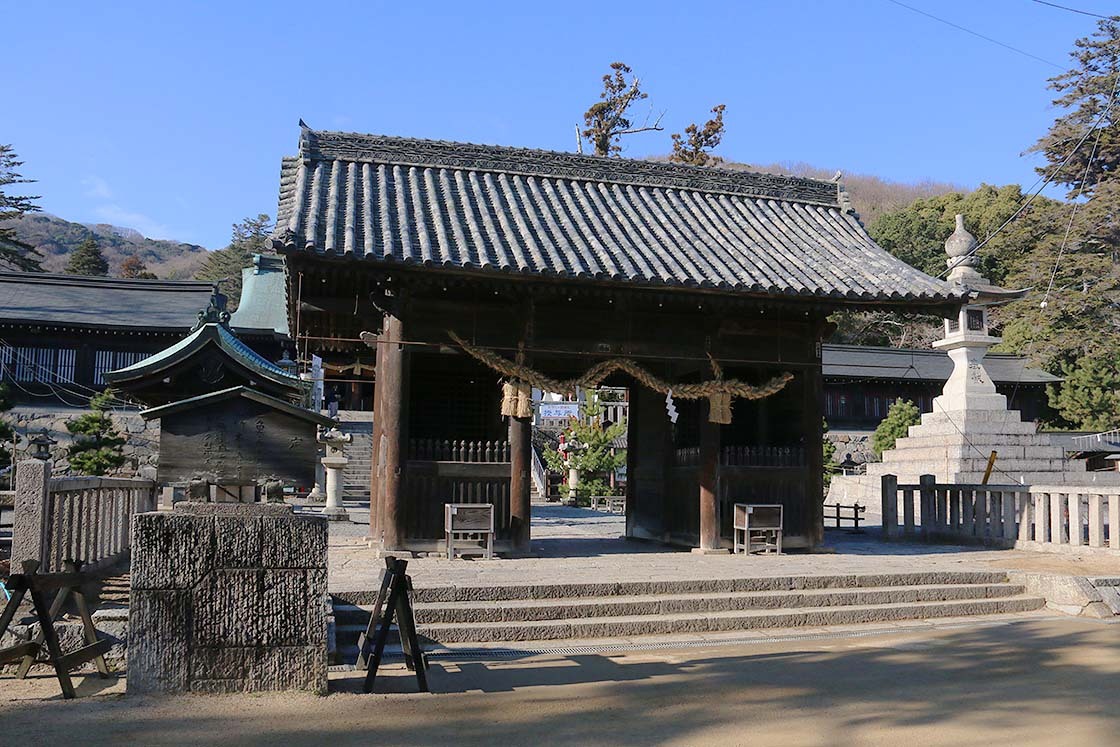
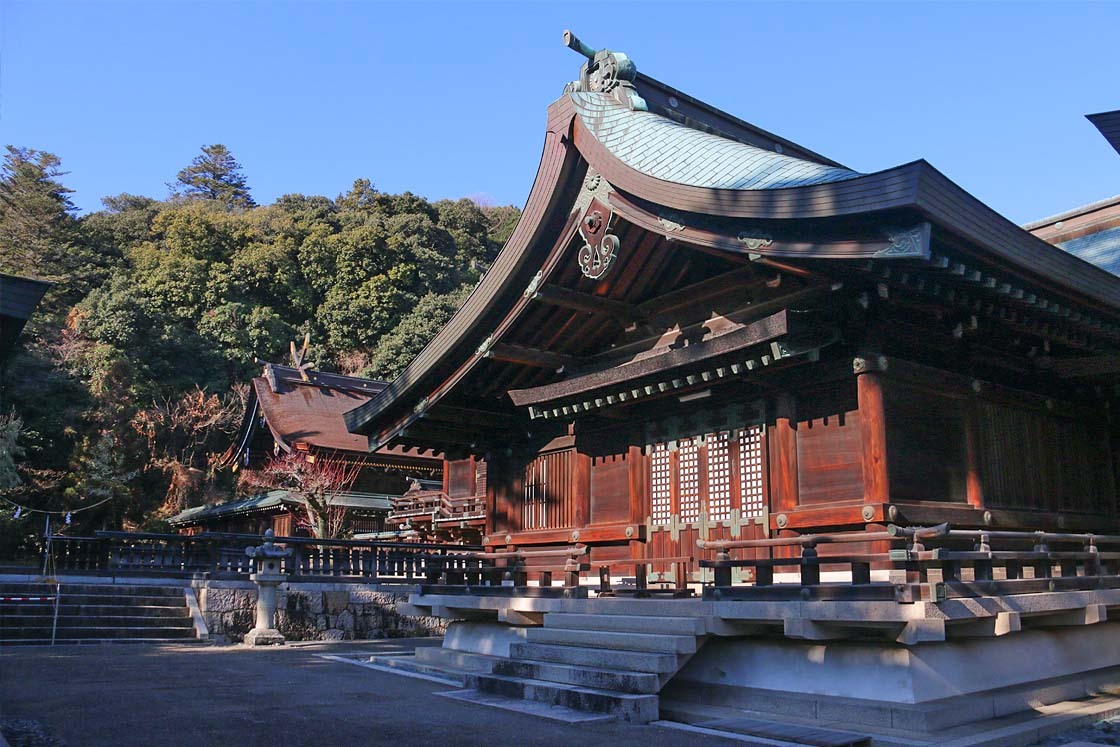
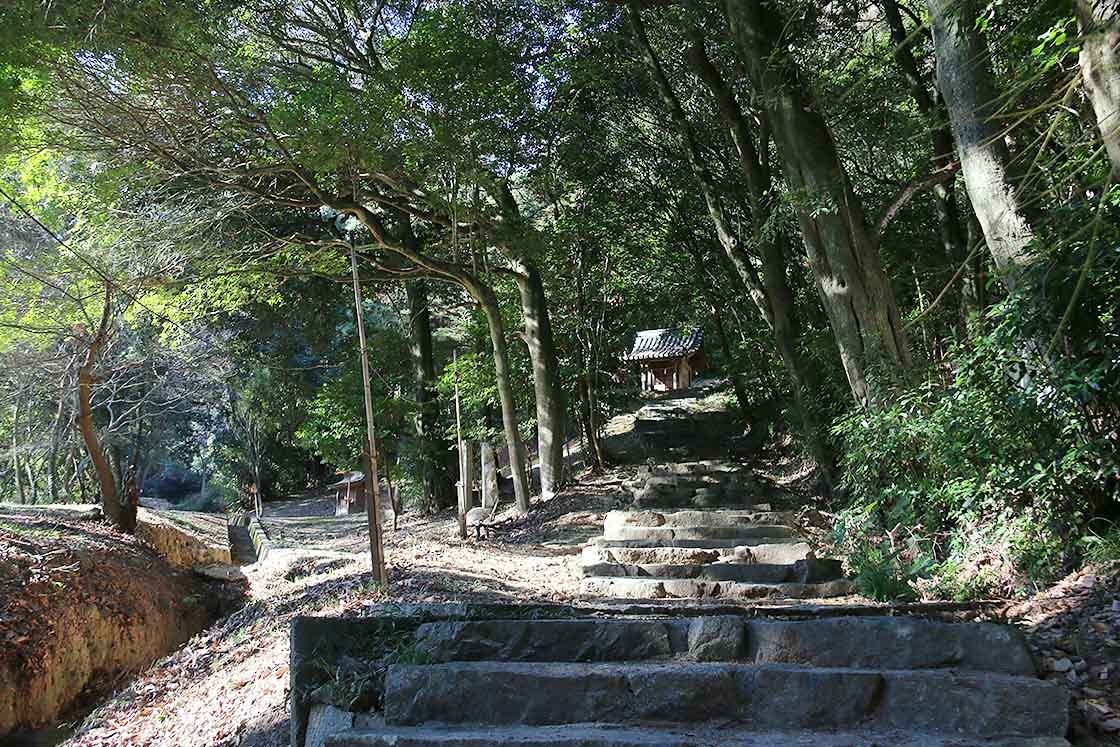
The more well-known shrine of the Kibiji District and wider Okayama Plain, however, is Kibitsujinja Shrine, said to have been the site where Prince Kibitsuhiko fought Ura.
Kibitsujinja Shrine is characterized by its main worship hall, called the haiden, that has four dormer gables. This architectural feature is unique in Japan, so has been named after the shrine as the Kibitsu-zukuri style. The shrine has various references to Momotaro and the Prince Kibitsu legend, as well as a 350 meter-long corridor where the procession for the bi-annual offerings to the enshrined deities take place.

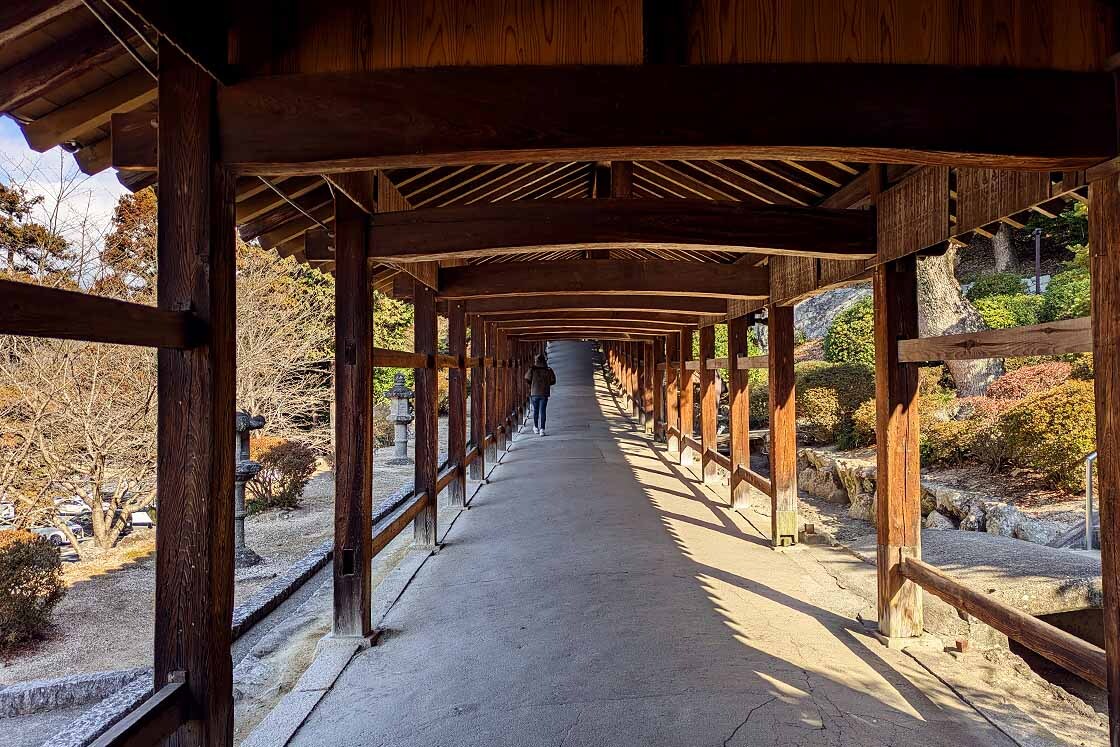
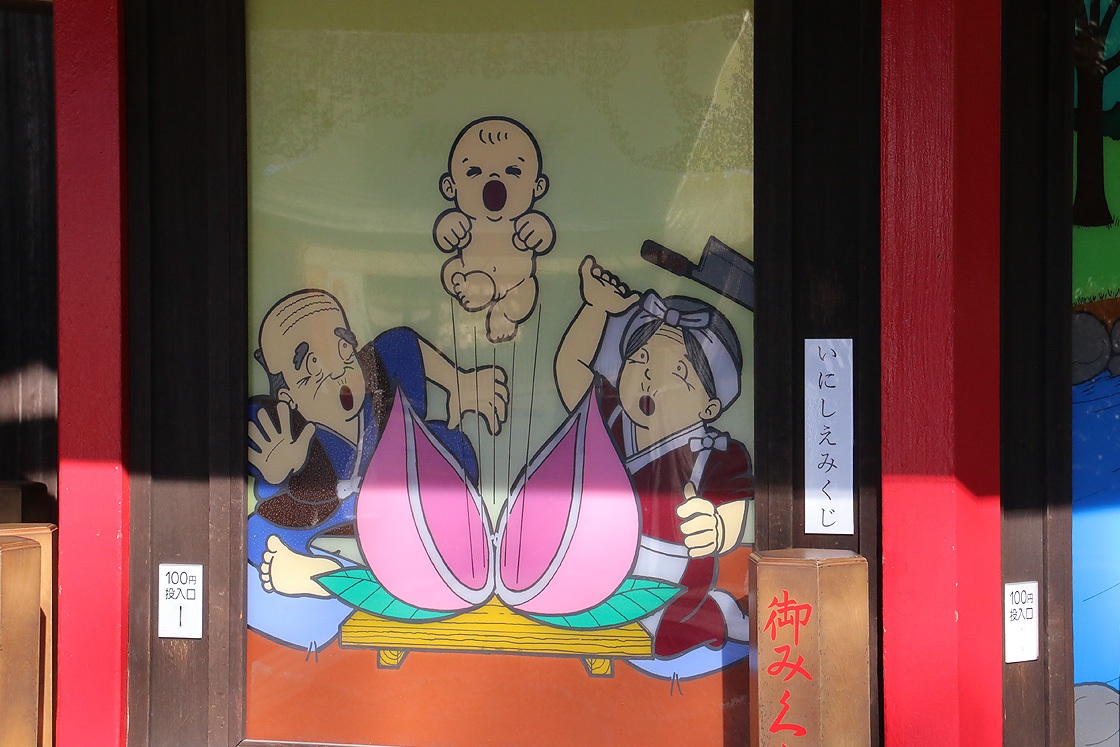
The last spot near the cycle route relating to the legend is the small Koikui Shrine, meaning "carp-eating" shrine, as this is said to be where the prince caught Ura in his carp form. There are a few small references to carp along the structures.
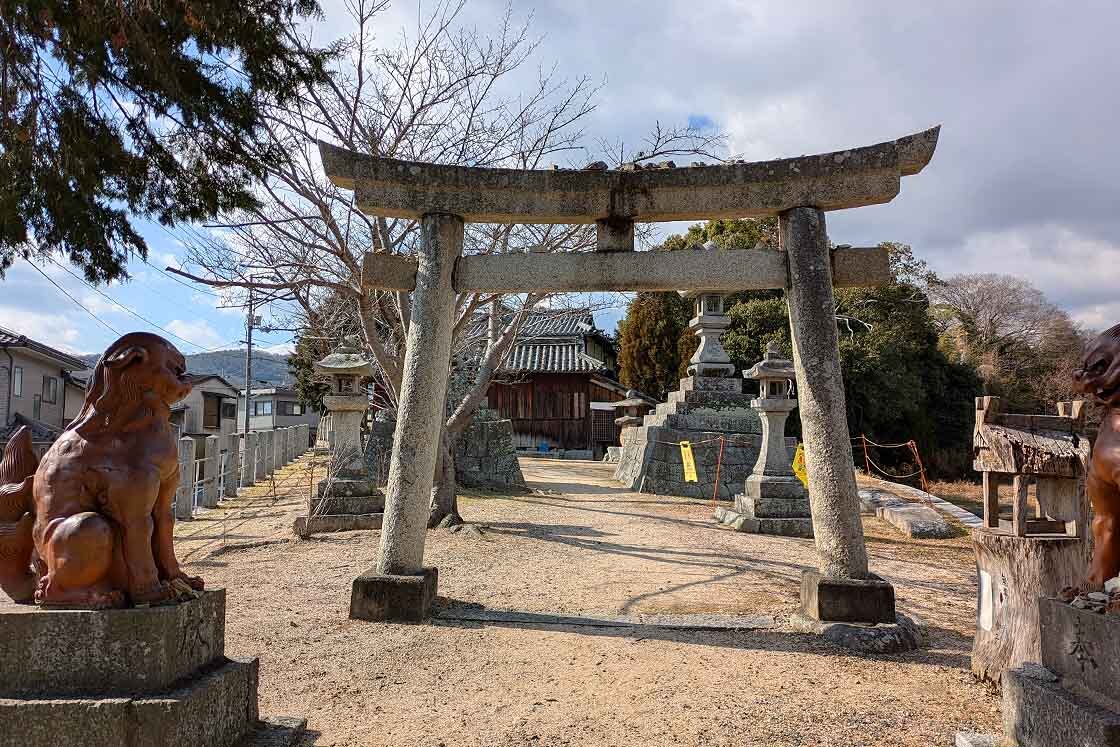
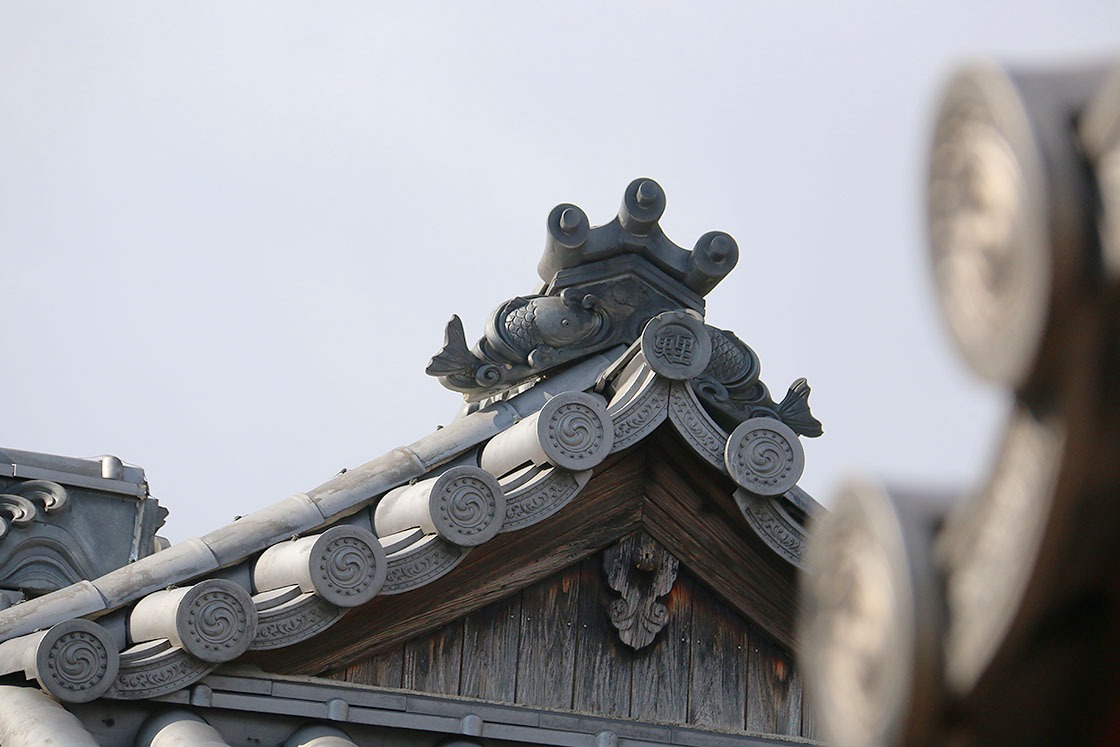
Although there were no other spots on the route connected directly to the legend, I did visit two other historic spots: Tsukuriyama Kofun and Bitchu-Kokubunji Temple.
Tsukuriyama Kofun is a burial ground estimated to have been built in the 5th century, likely made for leaders of the Kibi Kingdom of the time. Like many other important burial mounds around Japan, it is made in a keyhole shape.
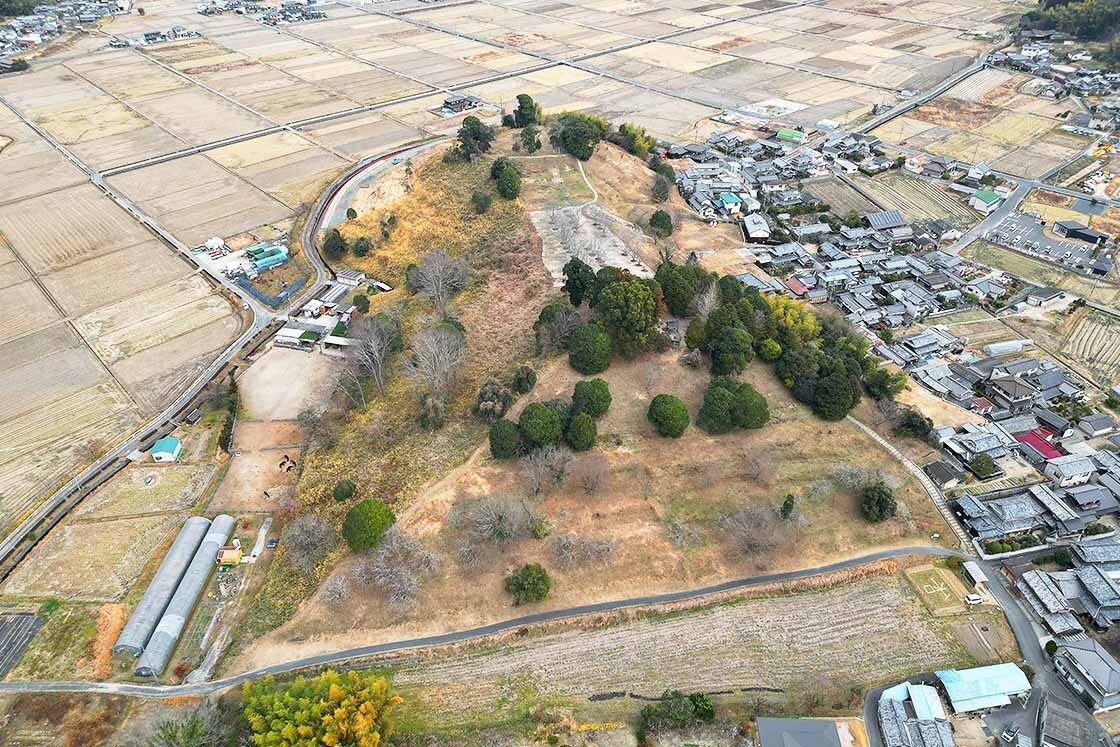
Bitchu-Kokubunji Temple dates back to the year 741, when the emperor ordered one Kokubunji temple to be built in every province of Japan, including this area, formerly Bitchu province. The temple has been rebuilt a few times, but some of its original stone foundations still remain. Its most striking feature is the pagoda, which you can see from the cycling route. It is the only 5-storied pagoda in Okayama prefecture and stands at 34m tall.
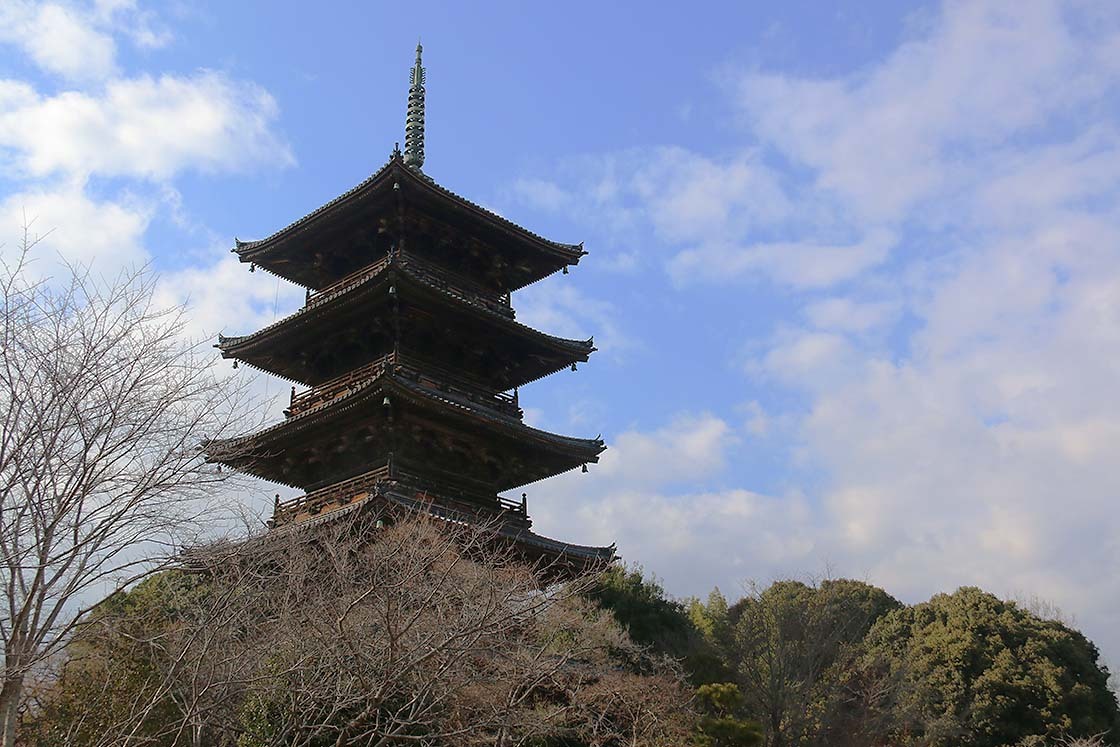
Near the cycling route there are also a number of cafes and bakeries to stop and refuel. At the end of my cycle, I chose to stop at Bon Bon bakery, an elegant space with indoor and outdoor seating and a great variety of delicious baked goods. I treated myself to one savory and one sweet item with a Hojicha latte.

Something I really appreciated about my bike rental experience was that I could return my bike at the rental shop near Soja Station, instead of having to return to my starting point. I paid at the start point, and simply had to return the bike along with the return slip before closing.
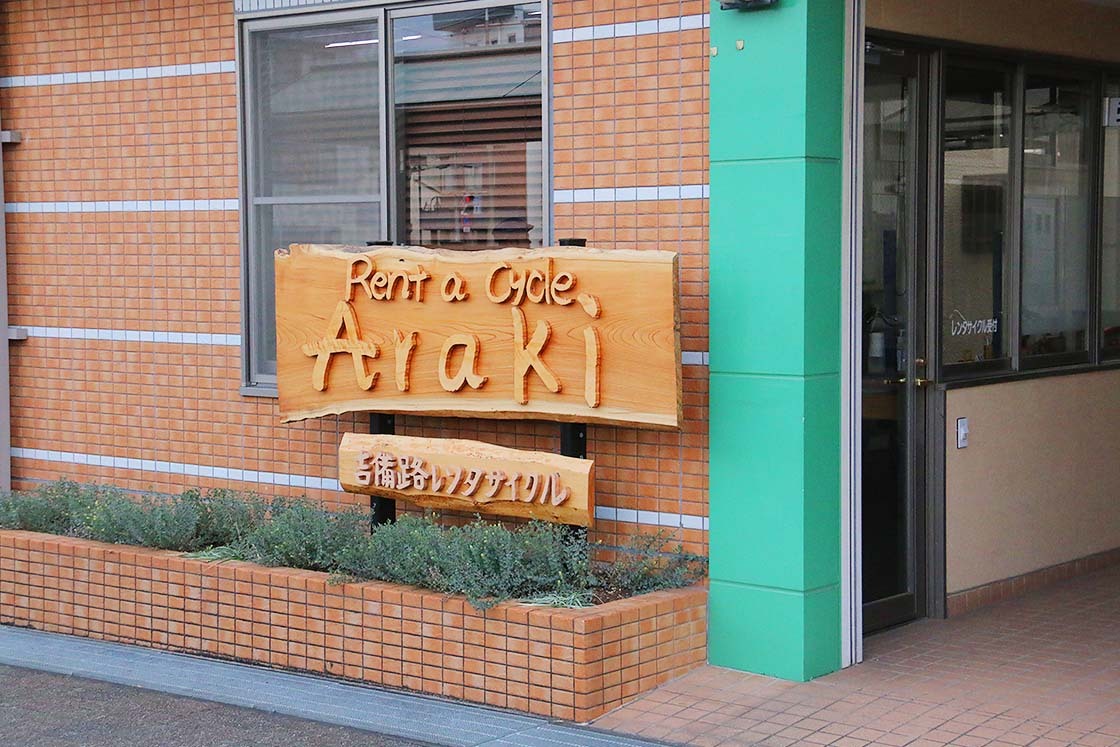
After all that cycling, I ended the day with some local flavor in Okayama city center, at Iwategawa. There I tried the local favorites of mamakari (Japanese Sardinella) and sawara (Spanish Mackerel) sashimi alongside some locally-brewed sake. The sardinella was served with lemon that complemented its light flavor, and the Spanish Mackerel was meaty and rich. The good food in combination with the warm, smooth sake set me up for a great night's sleep!
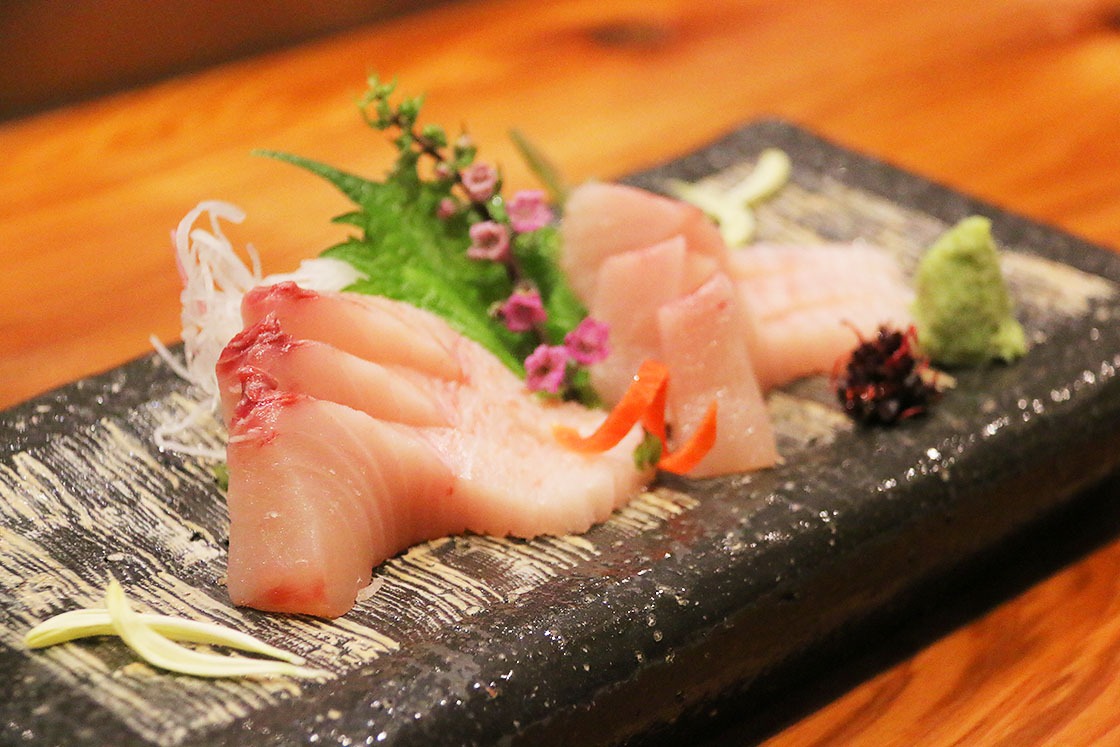
Day Three: Okayama Korakuen Garden and Uno Port
It wouldn't be a trip to Okayama without visiting the famous Okayama Korakuen Garden. So, on the last day, I spent a few hours there before heading to the port.
Okayama Korakuen Garden is known as one of Japan's Three Great Gardens, along with Kanazawa's Kenrokuen and Mito's Kairakuen.
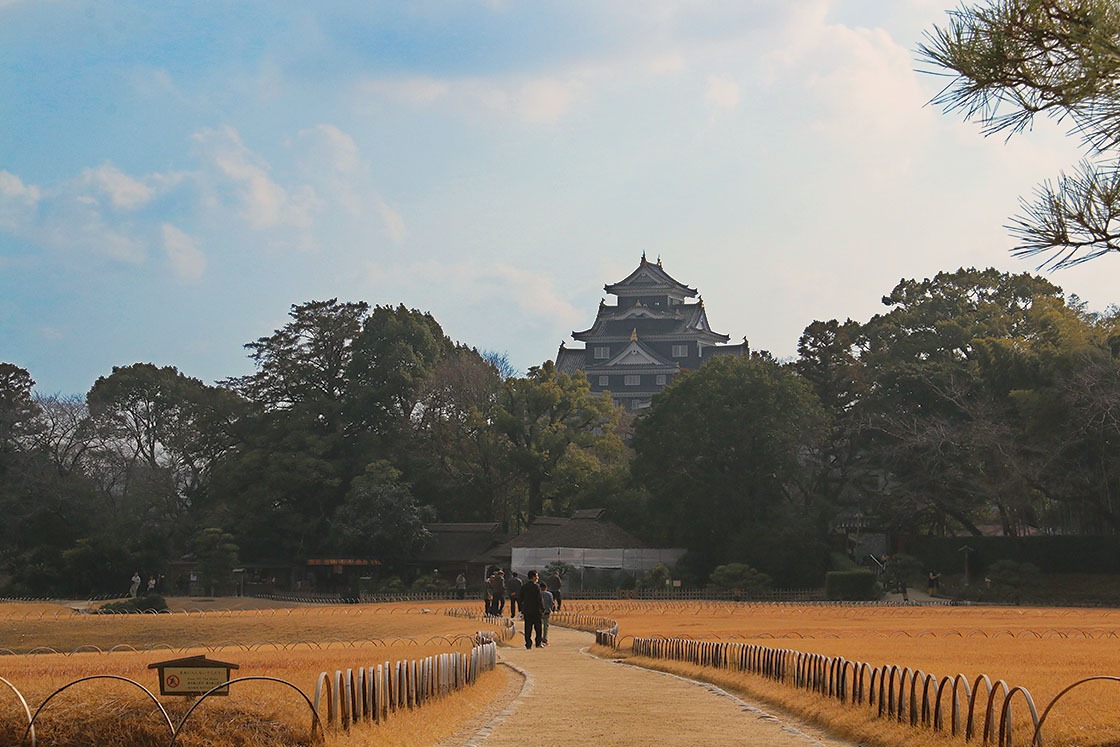
The garden was ordered for construction in 1687 by the Feudal Lord of the Okayama Domain, Ikeda Tsunamasa, as a place of relaxation, occasionally allowing his retainers, their families and townspeople to enter. There are numerous rest houses and tea houses throughout the garden along the network of strolling paths.
My favorite was Ryūten Rest House, one of the garden's historic buildings. It has a small stream running through its center, and you can take your shoes off to sit on the wooden floor by it, looking out across the wide, open garden.
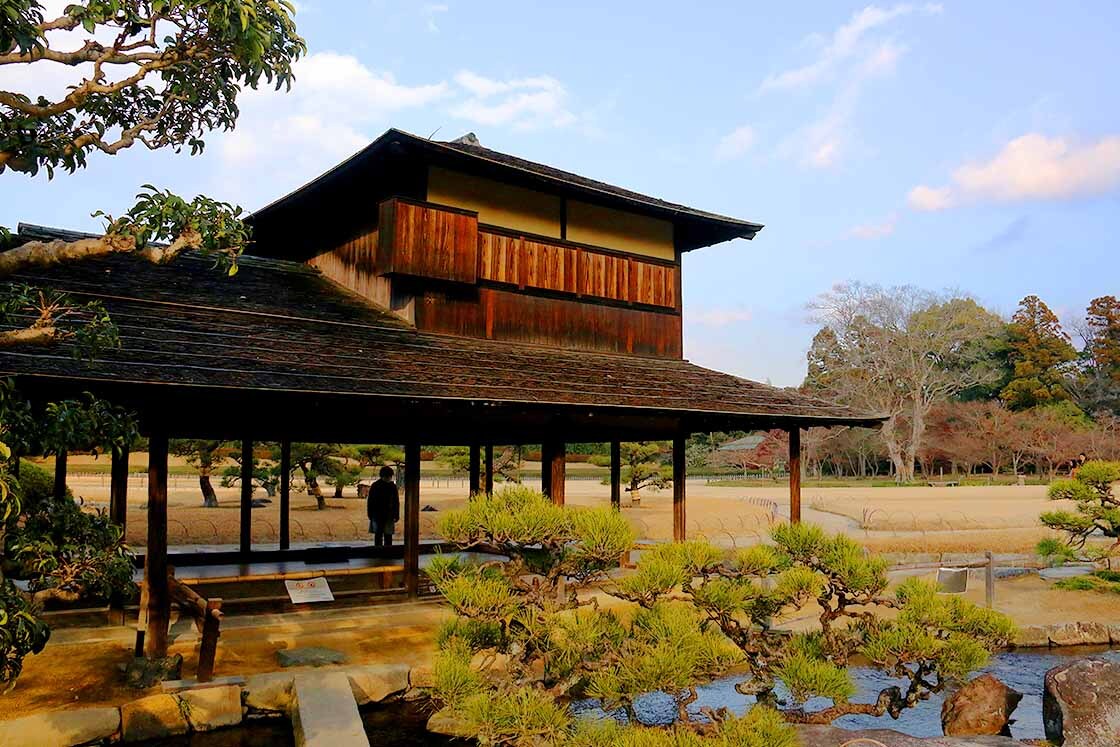
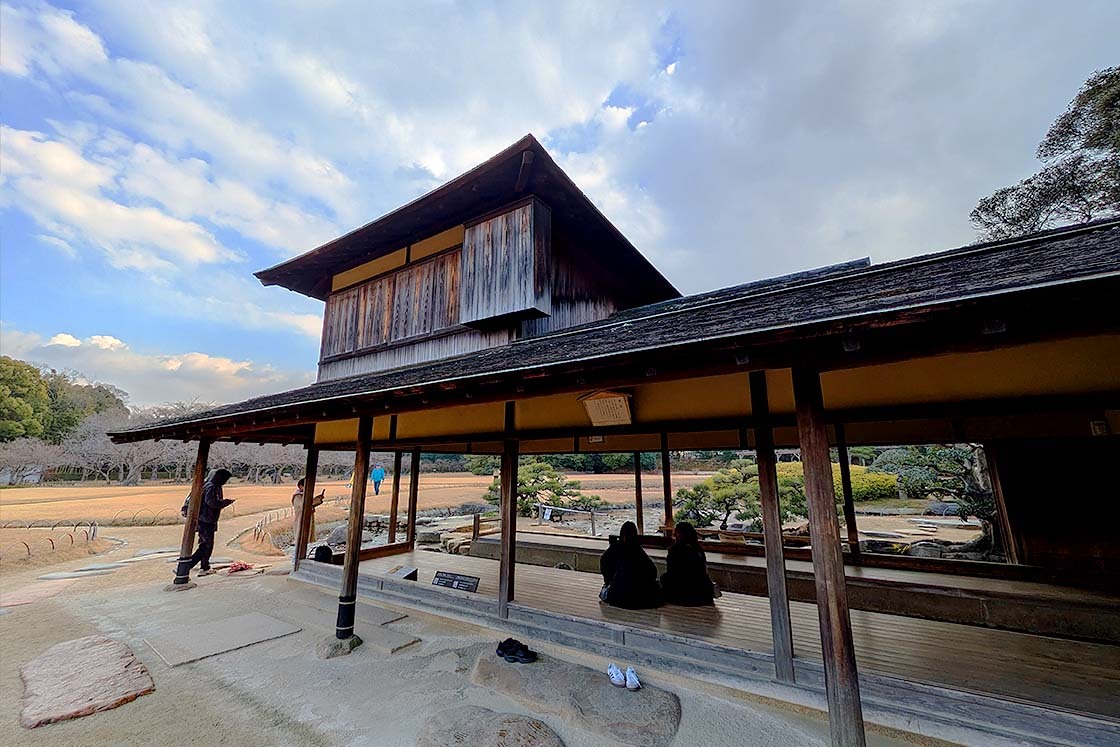
If you want an even better vantage point of the garden, though, Yuishinzan Hill is the place to go. From there, you get a great view of the central pond and the paths going around it, as well as some of the buildings around the garden, like Jigen-dō Temple.
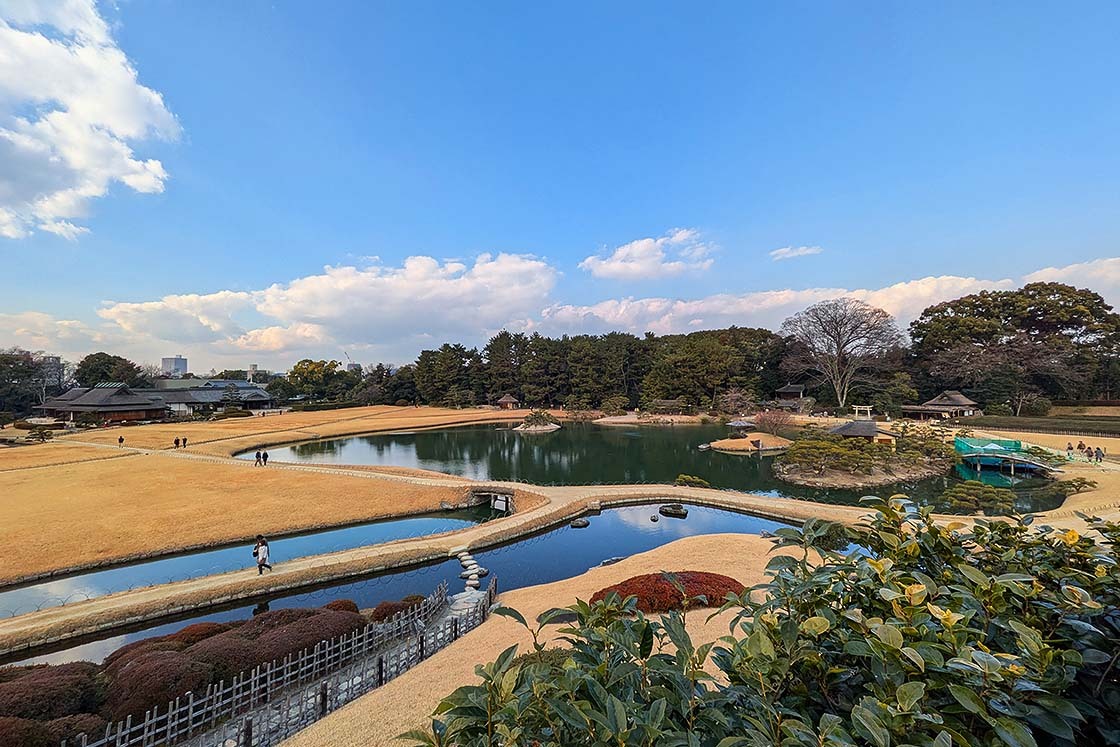
You get some great views of the castle from the north side of the pond, and if you exit via the south gate, you can see the castle in all its glory across the bridge.
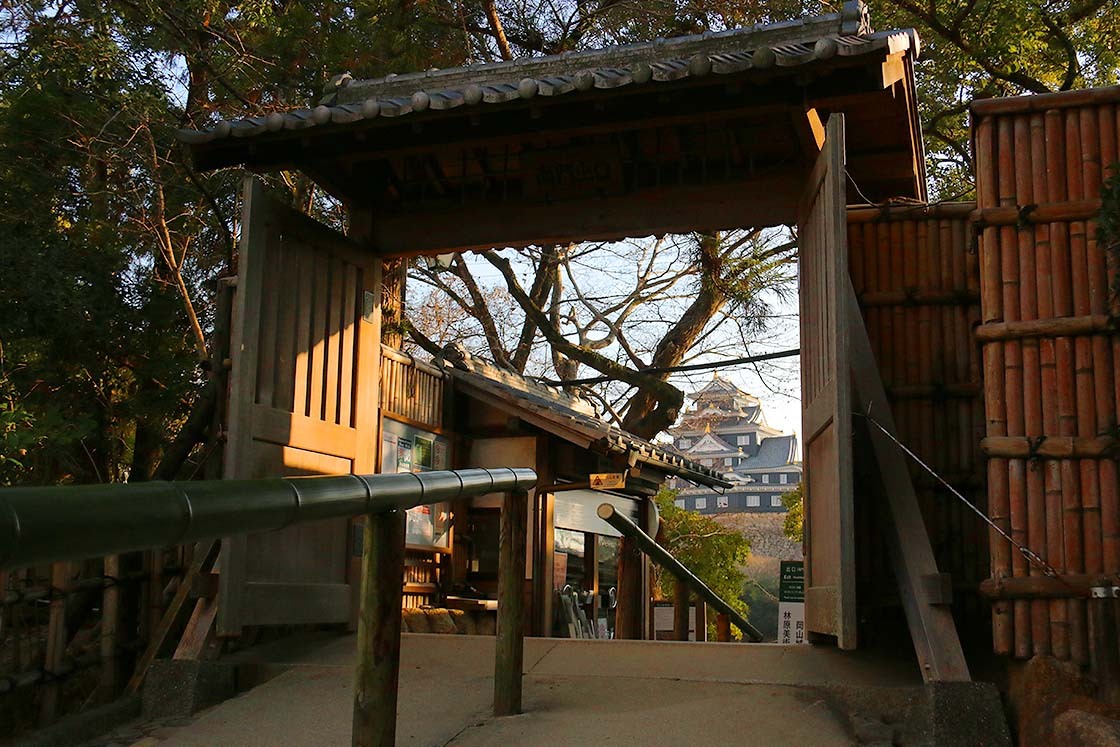
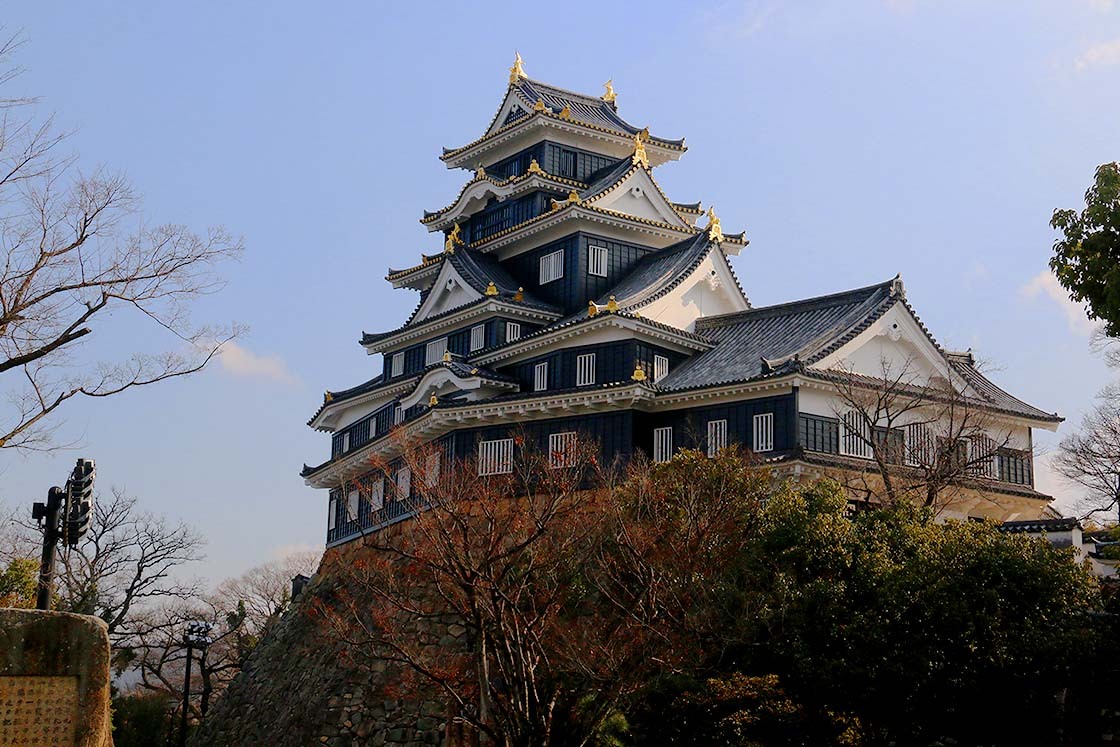
To get to and from the garden, I used the city tram's Higashiyama Line, which has a stop called Shiroshita about a 10-minute walk from the south gate.
My last stop was the port, so I took the tram back to Okayama Station followed by two trains to Uno Station. Although there are some direct trains, they are infrequent, so I took the connection making a quick change at Chayamachi Station before continuing to Uno Station.
Uno Port connects Japan's main island with the so-called art islands of Japan, like Naoshima, Teshima and Shodoshima. The art islands get their name from their abundance of contemporary art, performances, and architecture. Once every three years, a contemporary art festival called the Setouchi Triennale is held in the area, lasting 100 days across spring, summer, and autumn.
To welcome you to this artsy area, from the moment you step out of the train station you will find artworks dotted all over. The station itself is somewhat of a work of art, with a black and white theme, and is just a short walk from the port where you can catch a ferry to one of the art islands.
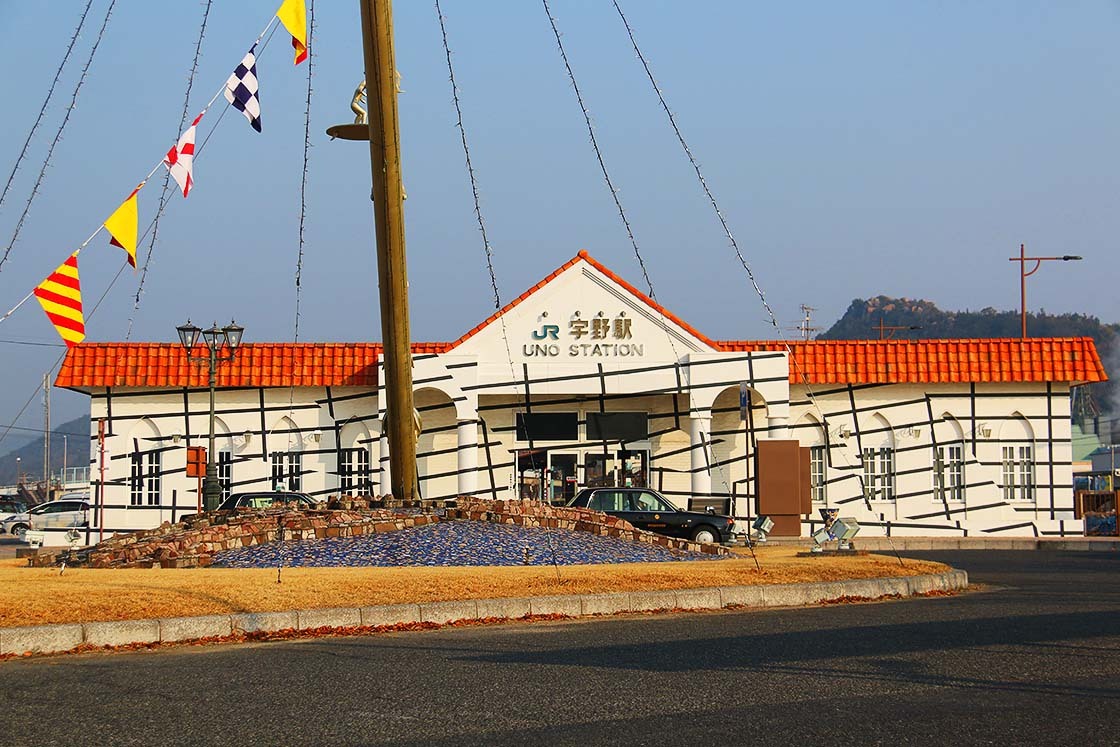
Right beside the station is the first work of art, called Beyond the Last Stop. This looks like a strange vertical bike rack, and in fact holds working bikes that are made out of metal tools that had reached their final use. You can even rent the bikes themselves from the Information Center.
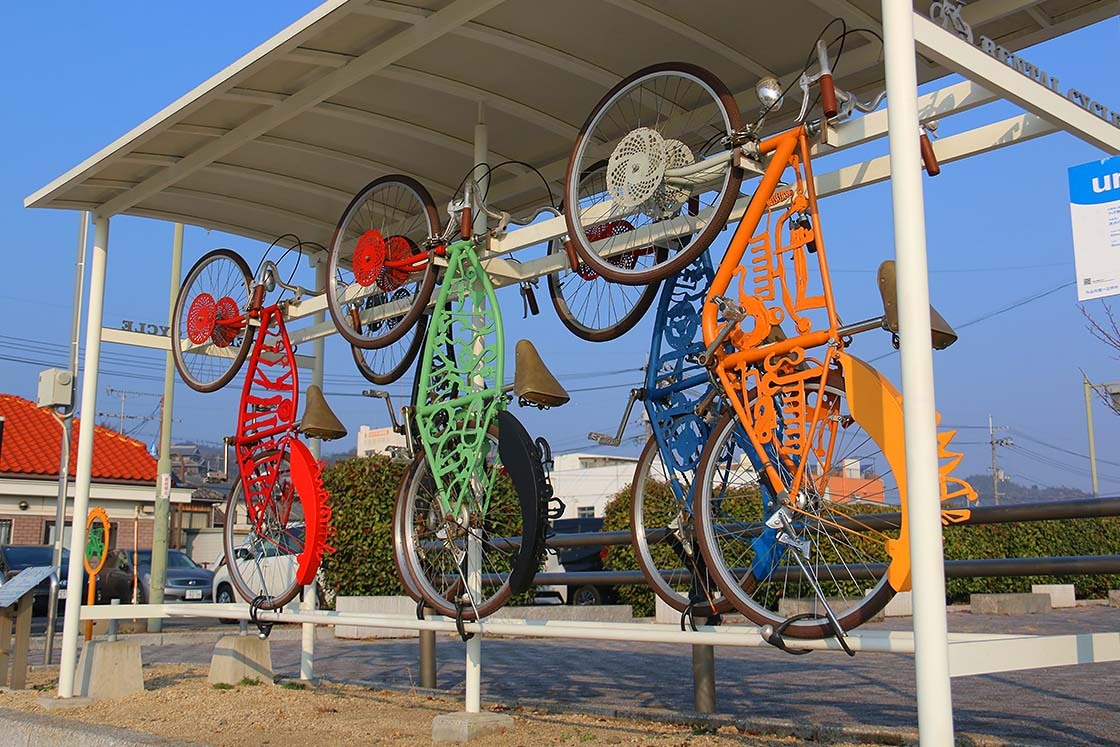
Across the road, you'll also spot the Goddess of Love statue, and if you continue on towards the port, you'll eventually come to Uno's most iconic artwork: Chinu - The Black Sea Bream of Uno. From the name alone I wouldn't blame you for not immediately recognizing it, as it is largely not black at all, but instead a colorful array of red, yellow, green and blue. It is named after the type of fish it represents, and is made up of trash that washed up on nearby shores, serving as a reminder to keep the waters clean.
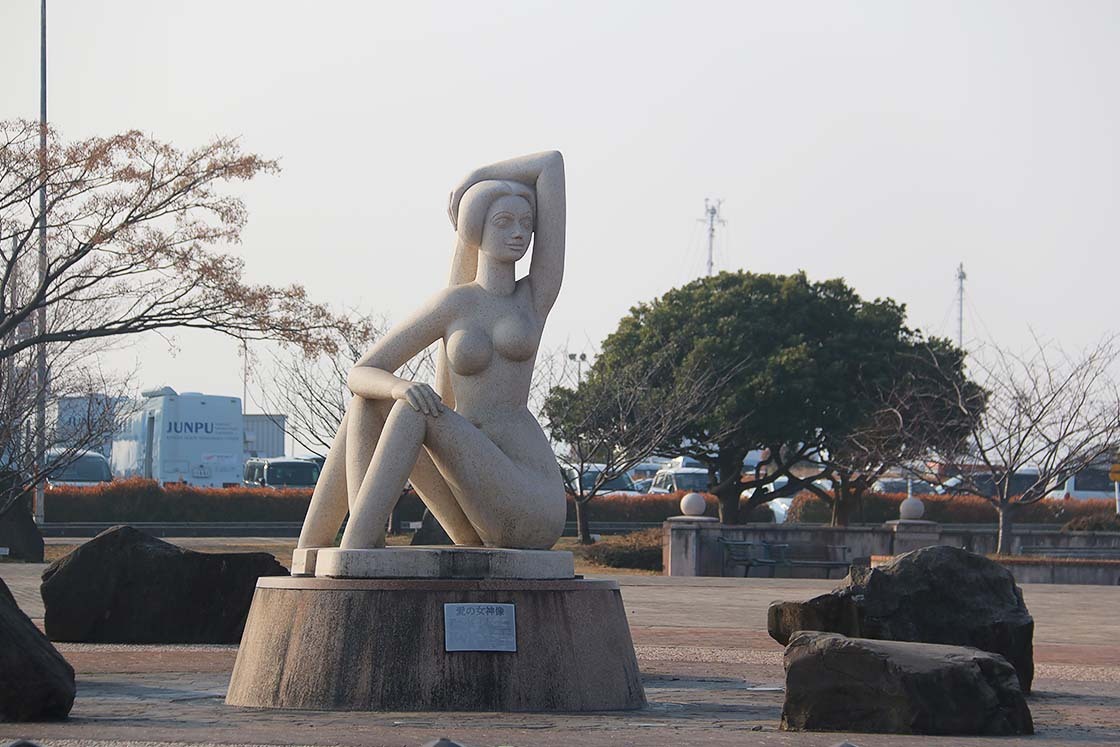
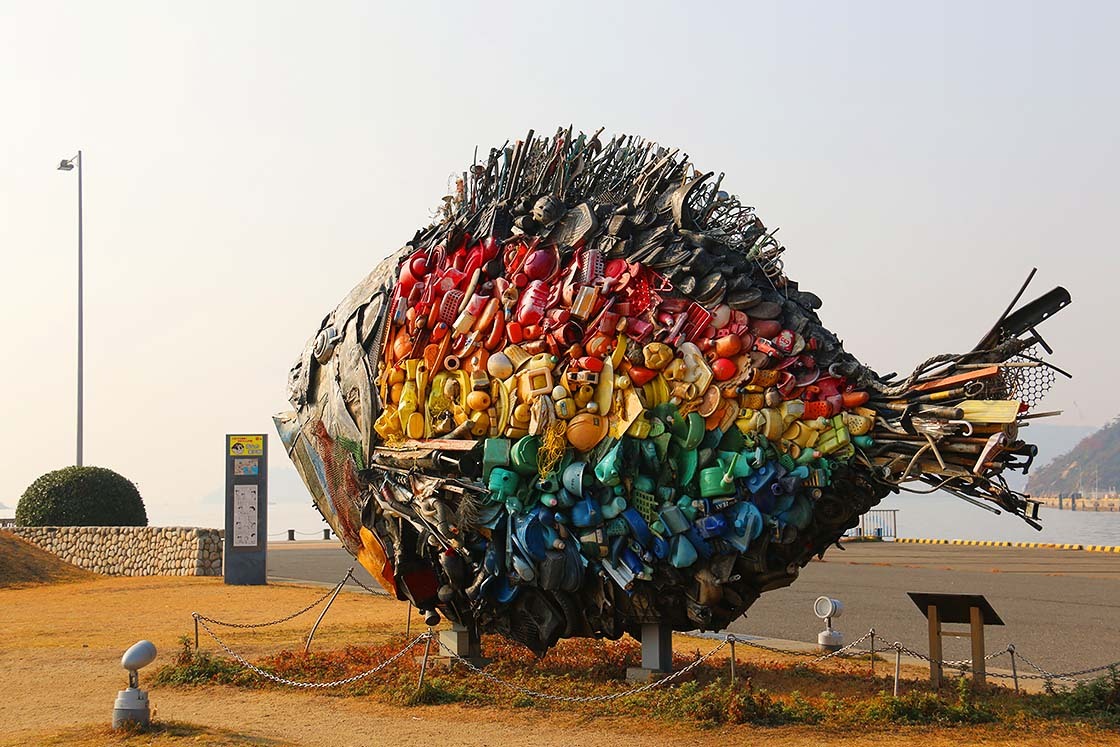
Of course, this is just a taste of the vast array of art you can expect to see if you go on to visit the art islands. With Okayama between Osaka and the art islands, it makes for the perfect connecting trip to explore a different side of Japan. This may be the end of my trip, but it could be the start of yours!
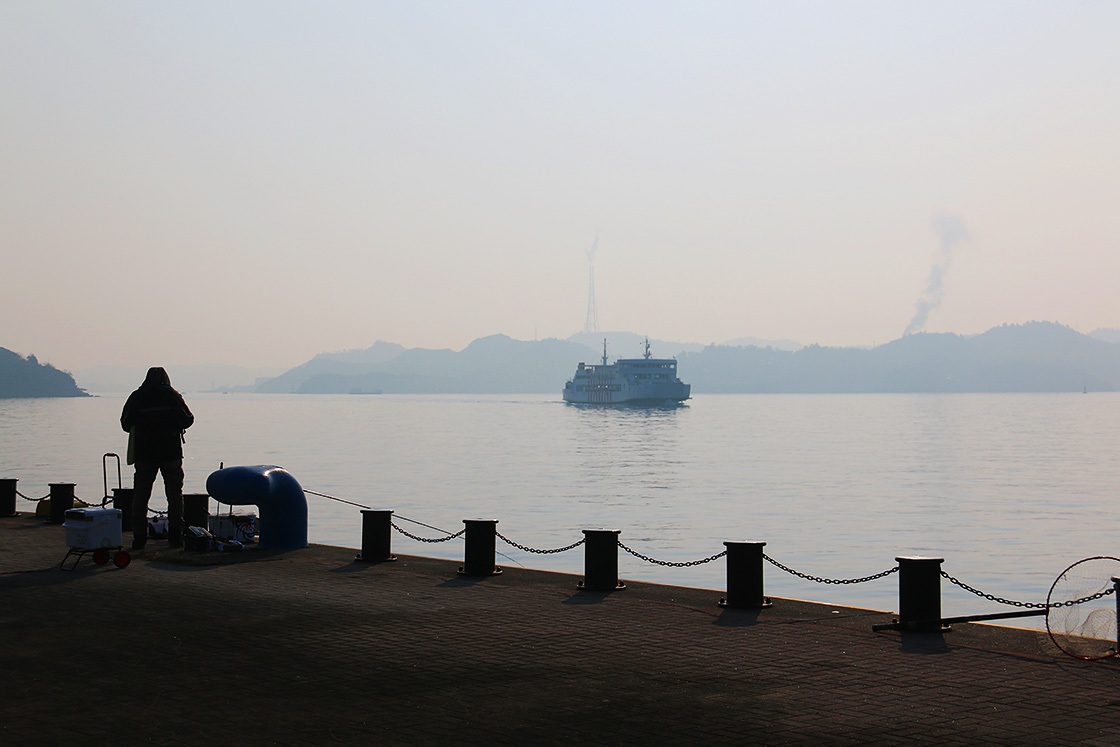
How to Get to Okayama and Which Passes to Use
Okayama is a major station along the Sanyo Shinkansen. It can be reached in about 45 minutes from Shin-Osaka (by Nozomi or Mizuho Shinkansen) or about three hours and 10 minutes by direct train from Tokyo (by Nozomi Shinkansen).
There are a number of useful rail passes for visiting Okayama. The Kansai WIDE Area Pass, for example, provides five days of unlimited use of JR trains in the Greater Osaka region going as far as Okayama, and gets you to all the places visited in this article. The Setouchi Area Pass covers an even wider area around the Seto Inland Sea for seven days of unlimited use of JR trains and selected ferries.
